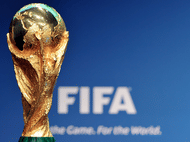At the heart of every sport is a debate that will rage on long after we are all six feet under the ground – who is the greatest of them all? A question that has never failed to fascinate ardent students of the game. Except that this time, even the casual observer is on hand to ramble on, now that we are talking of names he/she has actually heard of.
The old timers reminisce with teary-eyed nostalgia about the heroes of yesterday, while teenagers spend hours in front of the mirror perfecting their Cristiano Ronaldo haircuts, handy bottles of hair gel their weapons.
Just as the noise rises to a fever pitch, and we’re all about to enjoy a fistfight or two over our bottles of beer, the door to the bar slams open. A group of football aficionados enter, their faces alive with pleasure as they narrate the unshakable statistics – proving that X was, in fact, better than Y; that A did, in fact, score more goals than B.
You can almost feel the electrically charged air defuse around you, as numbers proceed to win again, just as they did in school all those years ago. Fan clubs return to their seats, the old-timers grumble on about how numbers don’t tell the whole story, and you begin to wonder – why?
Generations have been entranced by a simple, spherical ball and the masters who command it – and yet why are goal-scoring feats being rewritten as we speak? This is not the age-old adage of “records being meant to be broken” – there is something much larger at play.
The Messi-Maradona debate?
Lionel Messi has broken an almost fifty-year old record by topping Telmo Zarra’s La Liga mark of 251 goals, while Cristiano Ronaldo has hit a barely believable 20 league goals since the start of the season. We turn our attention to these stalwarts of the game because they are the best goal-getters out there today, even if Sergio Aguero may yet have something to say about that.
We will turn our attention to the differences from the time when another great used to strut his stuff with an almost casual disdain – Diego Maradona, because he represents the last crusader of the game before a succession of changes came about that made the game what it is today. This is not yet another instalment of the frankly yawn-inducing Messi-Maradona debate; more like an objective look at why players today may well have it a lot easier than their illustrious predecessors.
FIFA’s tweak to the offside rule
By popular opinion, football’s governing body is a wildly corrupt, ineffective bureaucracy headed by a man who does not have a mute button. But in 2005, they put in place a change to the offside rule that may well have revolutionised the game.
In 2005, the rule change focused on the still debated topic of “interfering” with play. Essentially, interfering with play was cast into two broad categories – when a) a player touches the ball while in an offside position b) a player in an offside position can potentially make physical contact with an opponent. The second part, namely “b”, came as a later amendment that ensured that a player (in an offside position) who was not interfering directly with play could not hinder an opponent from taking on a player who was in an onside position.
Defenses were no longer content to dismiss opposition players who moved in behind them, now that these players could still cause damage as play progressed. While the change did not effectively nullify the offside trap, it certainly gave managers a lot more to think about. As with most rule changes, this one was decried far and wide, with teams not sure what to make of it when the linesman raised the offside flag far later than they were accustomed to seeing.
This was because the linesman now had to ascertain that the player had actually touched the ball, which constituted one way of “interfering with play”. The abuse toward match officials increased tenfold, with linesmen looking like idiots when they raised their flags after much delay.
All in all, in this climate of confusion, with that little seed of doubt now planted in the minds of previously authoritative defenders, defensive lines proceeded to play a lot deeper. This ploy to limit the space behind them – thus minimising the uncertainty that the new rule change brought about – had a domino effect no one could quite have predicted.
The space in between the defensive line and the midfield now widened considerably, with the predominant formation in those times the 4-4-2. It was the beginning of the end for the out-and-out striker, with ball-playing forwards finding particular success initially.
Managers caught onto this quickly, and this has resulted in the rapid shift from a “three band” formation like the 4-4-2 to “four band” formations like the 4-2-3-1. The objective was to utilise this new-found space, but it also led to the evolution of the modern day striker. His primary responsibilities had shifted from goal scoring to holding up play and bringing in his team-mates into play.
The burden of goal-scoring was now more evenly distributed on the attacking unit as a whole. As if on cue, the extra-terrestrials - Lionel Messi and Cristiano Ronaldo – showed up to the party. Their ability to go past defenders from deeper, wider positions was now more valuable than ever. Accelerating into space, they could now take on the keeper with increasing regularity.
Their respective teams were built around them, with Pep Guardiola taking it to a whole new level. Messi was now given free license to roam in areas that had defenders everywhere stuck in limbo – do they go after him, and leave their keeper exposed? Do they stay behind and allow him to run at them at pace?
In a way, a game that was veering toward physicality and athleticism becoming predominant attributes was now welcoming smaller, but more skilful players. The added space meant that these players were now able to influence games much more effectively than before. When space was at a premium, these players had found themselves faced with the direct threat of physical specimen who were quick to take them out with minimum fuss.
The game was allowed to breathe again, and Barcelona and Spain proceeded to treat the world to some of the most aesthetic football ever seen.
The decline of the defender
Experts today continually denounce the death of the no-nonsense defender, criticizing ball-playing defenders who inevitably take it a little too far. The truth is that this is but a consequence of the way the game is played today, with the added space available ahead of defenders rendering them as the first line of attack. It can even be argued that the expectation of a more well-rounded game from defenders has had a detrimental effect on the art of defending itself.
How many truly world class defenders remain in the game today? Fifteen years ago that question would’ve elicited a host of answers – Italy had Maldini, Nesta, Costacurta, Cannavaro and Bergomi; France had Thuram, Desailly and Blanc, and so on and so forth. The same question today cautiously ventures Thiago Silva, nods at Sergio Ramos and Diego Godin and hopes for Marquinhos.
Exhaustive video analysis and tactical preparation means that the modern day defender has an army of data behind him that lets him pick out the preferences and tendencies of the opposition. Case in point – after a whirlwind first season, Aaron Lennon was sorted out by defences, and he has never quite reached the heights envisaged of him. Stephan El Shaarawy’s whirlwind start to life in Milan was cut short once his tendency to cut in from the left flank was worked out, and contingency plans put in place.
Even so, attacking players continue to thrive – pointing to an obvious decline in the standard of defending.
FIFA to the rescue again
Further back, FIFA introduced the “no tackle from behind” rule – which has since been amended to any tackle that endangers the safety of an opponent. This change was introduced prior to the World Cup in 1998 – FIFA has taken to introducing game-changing rules prior to world football’s showpiece event.
The logic is obvious – a wider audience is on hand to understand the new changes put in place to promote attacking play. Further back, the 1994 edition saw the introduction of the back-pass rule. Goalkeepers were previously allowed to collect the ball with their hands after a deliberate pass from a team-mate, and the endless monotony was a well-used tactic to halt the momentum of the opposing team, or run down the clock.
And we see the result of all this today – the imposing figure of Manuel Neuer himself. The man collects passes from defences like he’s Zidane, charges out into space like it’s nobody’s business, and completes more long passes than any Premier League player.
Pretenders to his throne will amuse us for years with the inevitable slip-ups that are sure to come when keepers everywhere start behaving like outfield players.
Conclusion
The promotion of attacking play is something that every football fan wants to see – this is The Beautiful Game, after all. And while we will always be surprised whenever FIFA does something even remotely good for the game, the clear heads of the men behind the scenes have contributed heavily to the goal-scoring feats we see today. You will note that since I have used the words “clear heads” and “men behind the scenes” it automatically rules out Mr. Blatter. Feel free to mock him as you please.
And while we see a decline in the standard of defending today, it has given rise to fascinating trends in the game. The rise of the holding midfielder, for one – a look at the most successful teams in the last twenty years will point to a solid presence ahead of the defense, who is either adept at closing down this space, or marshalling attacks from there. The double pivot that is commonplace today normally sees two players who combine both these attributes (will somebody please let Arsene Wenger know about this magical phenomenon?).
Sir Alex Ferguson still found success with the 4-4-2; Carlo Ancelotti certainly used the formation to great effect in the absence of Gareth Bale earlier in last season. Jose Mourinho continues to think of the big picture that sees his team take the trophies at the end of all the drama. While over in Munich, Pep Guardiola is ascending to a plane that most of us do not even have the ability to comprehend, let alone appreciate.
It is these visionaries who will determine which direction the game will take itself to next. Sir Alex may well have laid down the path, as did Arrigo Sacchi and Marcelo Bielsa. Do not let the blond mane and maverick mannerisms of Jurgen Klopp fool you – the man has more than a few tricks up his sleeve. And who knows, maybe even Monsieur Wenger will once again don his thinking cap.
Know that we are in safe hands, for these names and more of their ilk will always be on hand to fascinate us; their best laid plans carried out to perfection by an equally impressive pool of talent that makes the game what it is.



